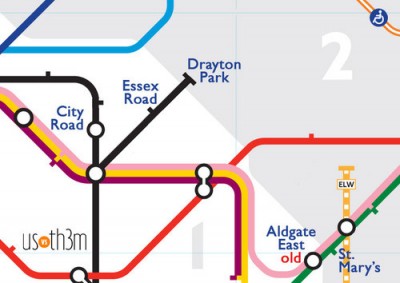Call for Papers for Volume 3, Issue no. 1 of the journal, Architecture and
Culture is titled ‘Architecture Film’
Issue edited by Dr Igea Troiani and Professor Hugh Campbell.
This aim of this issue of Architecture and Culture is to investigate how
the now expanded field of architecture utilises film studies, filmmaking
(feature film, short film, animation, stop motion animation or documentary)
or video/moving image making in practice, teaching or research, and what the consequences are of this interdisciplinary exchange.
While architecture and film have clearly distinct disciplinary outputs, the
possible intersection between them is less defined even though there is
considerable extant literature and research on this topic. Through this
call, we seek papers that investigate the ways in which practicing
architects, teachers of architecture and their students, and architectural
researchers, filmmakers, animators, documentary makers, social scientists or social geographers, anthropologists, landscape architects, urban designers,interior architects and installation artists are using film uniquely in their practice. We call for explorations of the way in which film contributes to architectural and filmic practice, knowledge and design,seeing the two disciplines side by side as equal, with no prepositions suggesting a specific relationship but at the same time creating a kind of distance and difference between the two.
We invite rigorously speculative, purposively imaginative, visually and
verbally stimulating contributions that explore architecture and film
through their own mode of argument – that combine text with sound or image
(moving or still), or that use text or image in investigative ways. We
encourage contributors to upload film, video or sound files relating to the
submission, as they will be accessible via the online publication of the
journal. Contributors are encouraged to submit parts of a script,
storyboard, mood board or sequential video grabs from the film or video
referred to in the paper. A maximum of 10 jpg images and 1 video per
submission will be accepted through our on-line submission system. We want
to explore how new digital technologies might impact on the form and content of an academic journal article.
Papers might address the following themes and questions:
– Designing in Practice and Film
Only a small number of practicing architects have made short or feature
fiction films. Most practicing architects use animation or 3D visualisations ‘for demonstration or selling’ their work, or are approached by or commission documentary makers or filmmakers to make documentaries or films of their architecture. Some architects adopt a less pragmatic approach,instead electing to use film or video to focus on existential space. Select social scientists or geographers have used video to record social relations in space. While it does exist, it is less common for architects to use live action footage as a part of their fieldwork studies or design research process. What are new and original ways in which practicing designers of
space can use film in their praxis? What expertise do architects need to
know about filmmaking to undertake inter-disciplinary architecture film
work? Can, and then how can, the making of videos or films better allow
architects to understand the cultural, social and environmental context of
sites to enable to them operate in a more engaging way with client/user
issues? What are the virtues that film and video can bring to
architectural/landscape/urban design/interior design? How can CG, VFX and
animation be used inventively to contribute to the practice of
architectural/landscape/urban/interior design? How can working with film or
video contemporise the architect’s practice?
– Architecture Film Pedagogy
Within schools of architecture, it is increasingly common to see the use of
experimental filmmaking or integration of film studies in the architectural
design studio or for site research. Within the architectural design studio,
teachers of architecture have speculated on how architecture and film might
be used methodologically to change the process of design or to incorporate
particular design requirements. Using animation to create animated
architecture is becoming more commonplace. Students are capable of making
and editing films easily and can therefore produce short films, videos and
animations quickly. What are new and original ways of using film in design
studio teaching? How might we better understand place, culture and identity
through using film in architectural studio research? Are there truly radical ways in which film can be used in teaching about the making of space and place?
– Architectural Research and Film
In their analyses of commercial and art house films, theoreticians and
historians regularly speculate on the ways in which film studies inform an
understanding of architecture and space. An uncommon form in which film is
used in architectural history research is the documentary, where oral
accounts can better be recorded. Another emergent form of architectural
filmmaking is in the production of short fiction films. How can making
documentaries or films enhance architectural research? To what extent can
researchers on architecture learn filmmaking? How have architects
collaborated with film industry experts in research? What is the difference
between working with real footage as opposed to fictional material in making architecture films?
The submission deadline is 10th March 2014, 5pm UK time. Accepted articles
will be published in March 2015.
For author instructions, please go to ‘Notes for Contributors’
http://www.bloomsbury.com/uk/journal/architecture-and-culture/
Upload
submissions at: http://www.editorialmanager.com/archcult/
If
you have any queries or require further information, please contact: Igea
Troiani: itroiani@brookes.ac.uk
Architecture
and Culture is the new journal of the Architectural HumanitiesResearch
Association http://www.ahra-architecture.org/


